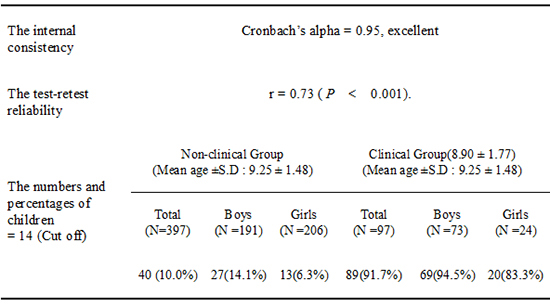1. Kessler RC, Foster CL, Saunders WB, Stang PE. Social consequences of psychiatric disorders, I: Educational attainment. Am J Psychiatry. 1995; 152:1026–1032.
2. McDaniel SH, Grus CL, Cubic BA, Hunter CL, Kearney LK, Schuman CC, Karel MJ, Kessler RS, Larkin KT, McCutcheon S, et al. Competencies for psychology practice in primary care. Am Psychol. 2014; 69:409–429.
3. Durlak JA, Wells AM. Evaluation of indicated preventive intervention (secondary prevention) mental health programs for children and adolescents. Am J Community Psychol. 1998; 26:775–802.
4. Moffitt TE, Caspi A. Childhood predictors differentiate life-course persistent and adolescence-limited antisocial pathways among males and females. Dev Psychopathol. 2001; 13:355–375.
5. Van Niel C, Pachter LM, Wade R Jr, Felitti VJ, Stein MT. Adverse events in children: predictors of adult physical and mental conditions. J Dev Behav Pediatr. 2014; 35:549–551.
6. Nasir A, Watanabe-Galloway S, DiRenzo-Coffey G. Health Services for Behavioral Problems in Pediatric Primary Care. J Behav Health Serv Res. 2014; DOI:
10.1007/s11414-014-9450-7.
7. Costello EJ. Primary care pediatrics and child psychopathology: a review of diagnostic, treatment, and referral practices. Pediatrics. 1986; 78:1044–1051.
8. Jellinek MS. Sounding board. The present status of child psychiatry in pediatrics. N Engl J Med. 1982; 306:1227–1230.
9. Jellinek MS, Murphy JM, Burns BJ. Brief psychosocial screening in outpatient pediatric practice. J Pediatr. 1986; 109:371–378.
10. Jellinek MS, Murphy JM. Screening for psychosocial disorders in pediatric practice. Am J Dis Child. 1988; 142:1153–1157.
11. Pagano M, Murphy JM, Pedersen M, Mosbacher D, Crist-Whitzel J, Jordan P, Rodas C, Jellinek MS. Screening for psychosocial problems in 4-5-year-olds during routine EPSDT examinations: validity and reliability in a Mexican-American sample. Clin Pediatr (Phila). 1996; 35:139–146.
12. Simonian SJ, Tarnowski KJ. Utility of the Pediatric Symptom Checklist for behavioral screening of disadvantaged children. Child Psychiatry Hum Dev. 2001; 31:269–278.
13. Jellinek MS, Murphy JM, Little M, Pagano ME, Comer DM, Kelleher KJ. Use of the Pediatric Symptom Checklist to screen for psychosocial problems in pediatric primary care: a national feasibility study. Arch Pediatr Adolesc Med. 1999; 153:254–260.
14. Reijneveld SA, Vogels AG, Hoekstra F, Crone MR. Use of the Pediatric Symptom Checklist for the detection of psychosocial problems in preventive child healthcare. BMC Public Health. 2006; 6:197.
15. Thun-Hohenstein L, Herzog S. The predictive value of the pediatric symptom checklist in 5-year-old Austrian children. Eur J Pediatr. 2008; 167:323–329.
16. Achenbach TM. Manual for the child behavior checklist/4-18 and 1991 profile. Burlington, VT: University of Vermont, Dept. of Psychiatry;1991.
17. Lee H, Oh KJ, Hong KE, Ha EH. Clinical validity study of Korean CBCL through item analysis. J Child Adolesc Psychiatry. 1991; 2:138–149.
18. Gardner W, Pajer KA, Kelleher KJ, Scholle SH, Wasserman RC. Child sex differences in primary care clinicians' mental health care of children and adolescents. Arch Pediatr Adolesc Med. 2002; 156:454–459.
19. Murphy JM, Ichinose C, Hicks RC, Kingdon D, Crist-Whitzel J, Jordan P, Feldman G, Jellinek MS. Utility of the Pediatric Symptom Checklist as a psychosocial screen to meet the federal Early and Periodic Screening, Diagnosis, and Treatment (EPSDT) standards: a pilot study. J Pediatr. 1996; 129:864–869.
20. Stoppelbein L, Greening L, Jordan SS, Elkin TD, Moll G, Pullen J. Factor analysis of the Pediatric Symptom Checklist with a chronically ill pediatric population. J Dev Behav Pediatr. 2005; 26:349–355.
21. Anastasi A, Urbina S. Psychological testing. 7th ed. Upper Saddle River, N.J.: Prentice Hall;1997.
22. Costello EJ, Costello AJ, Edelbrock C, Burns BJ, Dulcan MK, Brent D, Janiszewski S. Psychiatric disorders in pediatric primary care. Prevalence and risk factors. Arch Gen Psychiatry. 1988; 45:1107–1116.
23. Brandenburg NA, Friedman RM, Silver SE. The epidemiology of childhood psychiatric disorders: prevalence findings from recent studies. J Am Acad Child Adolesc Psychiatry. 1990; 29:76–83.
24. Ishizaki Y, Fukai Y, Kobayashi Y, Ozawa K. Validation and cutoff score of the Japanese version of the Pediatric Symptom Checklist: screening of school-aged children with psychosocial and psychosomatic disorders. J Jpn Pediatr Soc. 2000; 104:831–840.
25. Jutte DP, Burgos A, Mendoza F, Ford CB, Huffman LC. Use of the Pediatric Symptom Checklist in a low-income, Mexican American population. Arch Pediatr Adolesc Med. 2003; 157:1169–1176.
26. Crijnen AA, Achenbach TM, Verhulst FC. Comparisons of problems reported by parents of children in 12 cultures: total problems, externalizing, and internalizing. J Am Acad Child Adolesc Psychiatry. 1997; 36:1269–1277.
27. Muzzolon SR, Cat MN, dos Santos LH. Evaluation of the Pediatric Symptom Checklist as a screening tool for the identification of emotional and psychosocial problems. Rev Paul Pediatr. 2013; 31:359–365.
28. Rogler LH. The meaning of culturally sensitive research in mental health. Am J Psychiatry. 1989; 146:296–303.
29. Jin Y, Chung US, Jeong SH, Lee WK. The reliability and validity of the korean version of the child sexual behavior inventory. Psychiatry Investig. 2013; 10:336–345.
30. Lee KM, Jeong SH, Lee WK, Chung US. Reliability and validity of the Korean version of the child report of post-traumatic symptoms (CROPS) and the parent report of post-traumatic symptoms (PROPS). J Korean Acad Child Adolesc Psychiatry. 2011; 22:169–181.
31. Shin JU, Jeong SH, Chung US. The Korean Version of the Adolescent Dissociative Experience Scale: Psychometric Properties and the Connection to Trauma among Korean Adolescents. Psychiatry Investig. 2009; 6:163–172.









 PDF
PDF ePub
ePub Citation
Citation Print
Print




 XML Download
XML Download